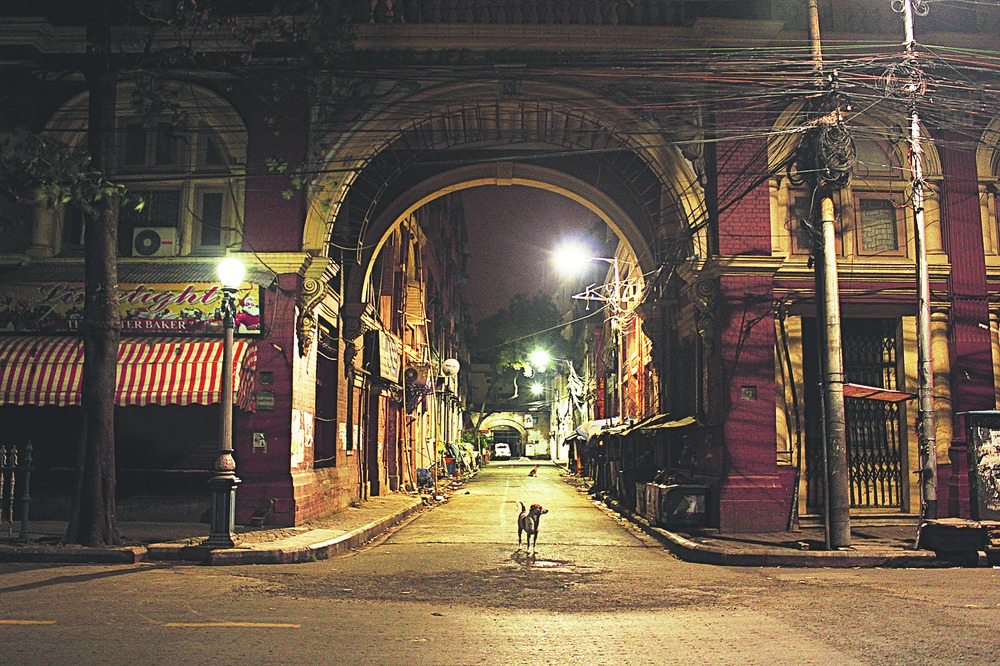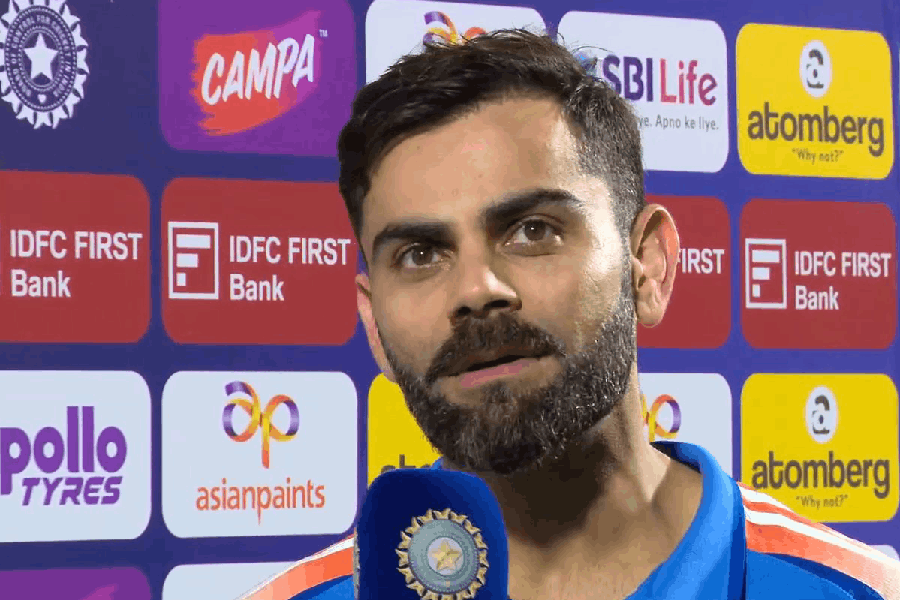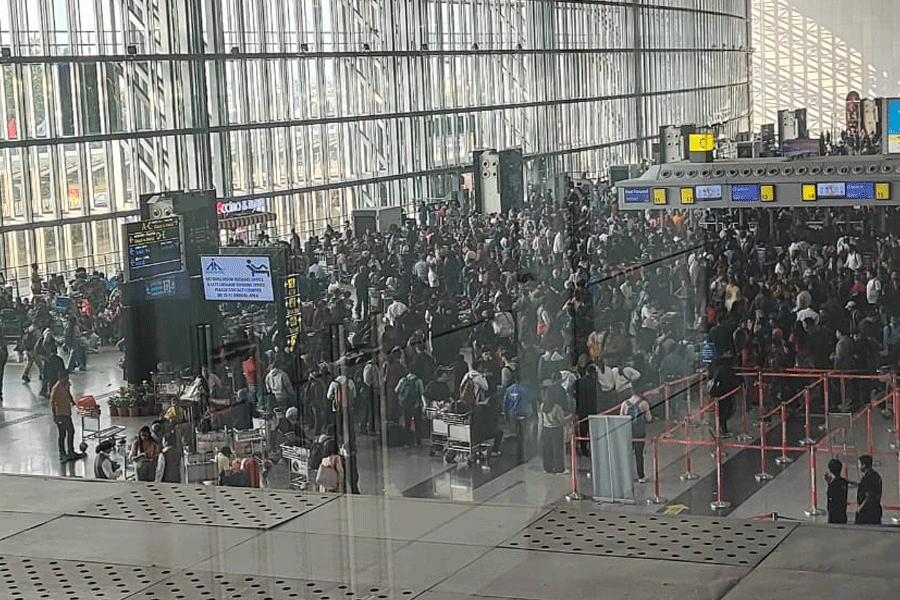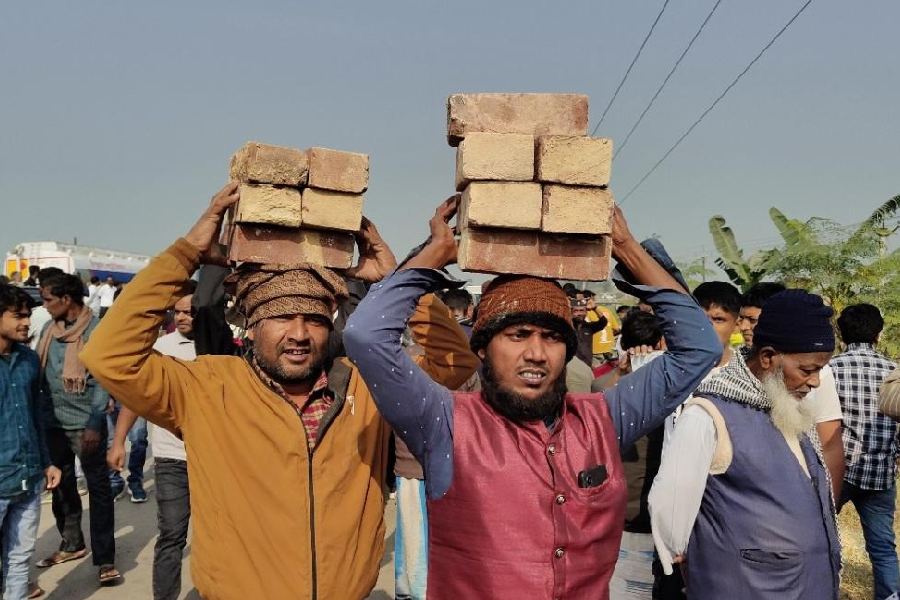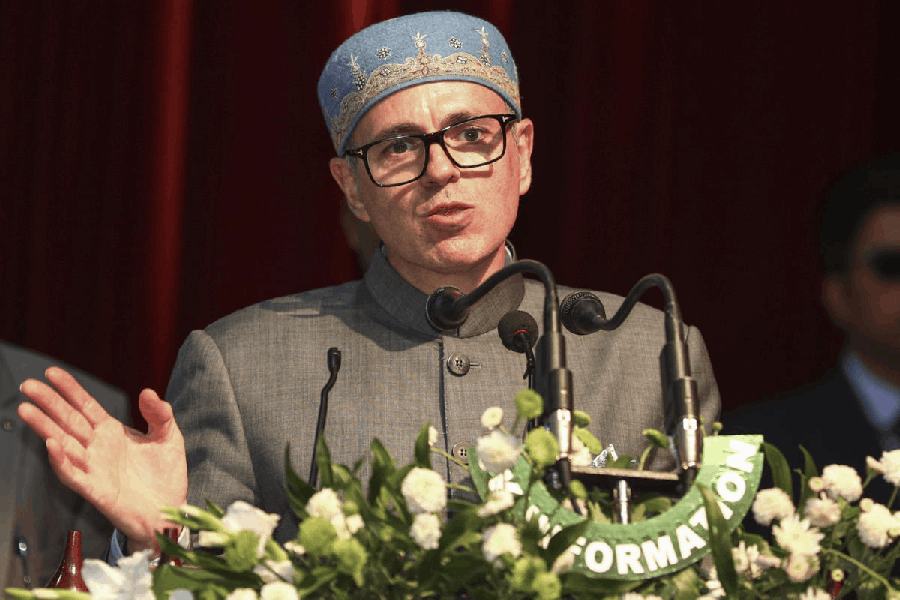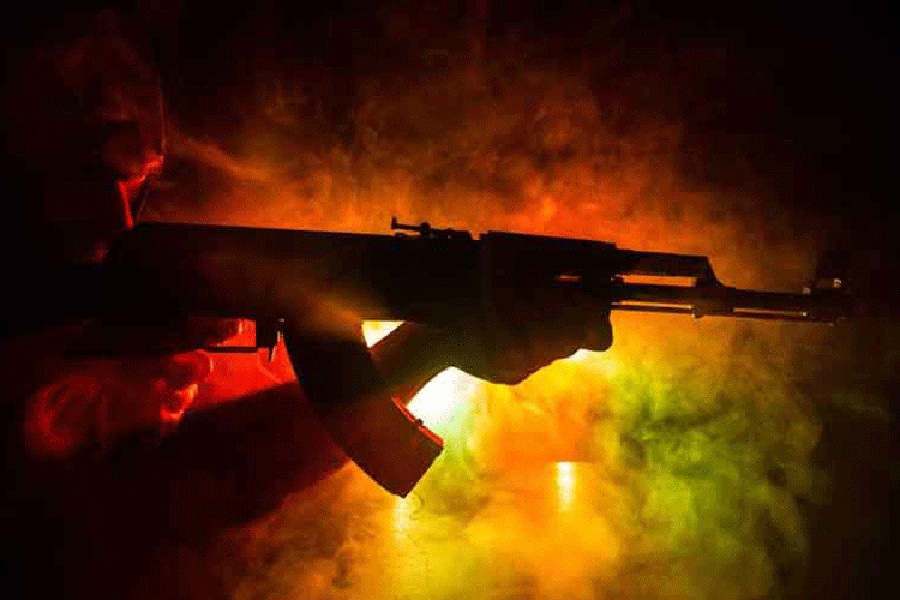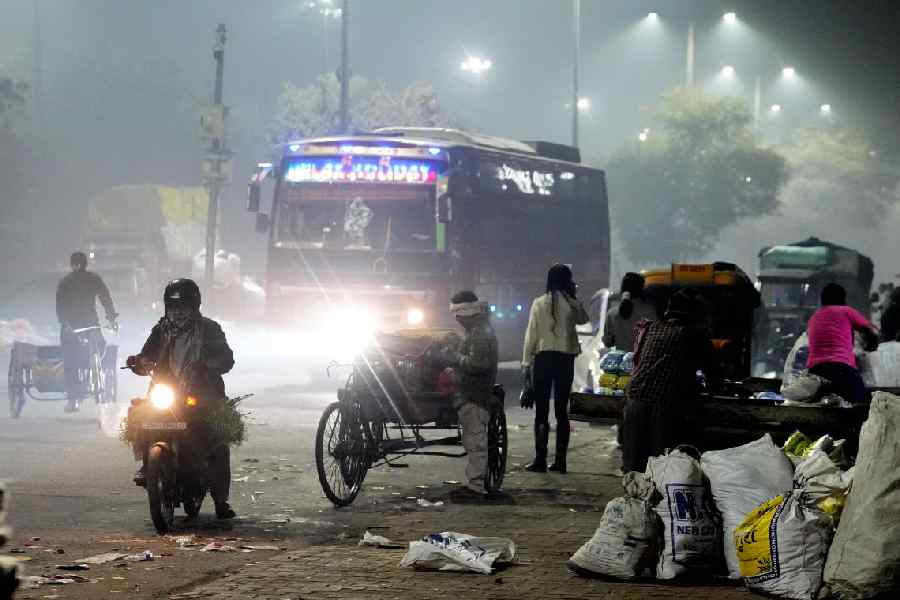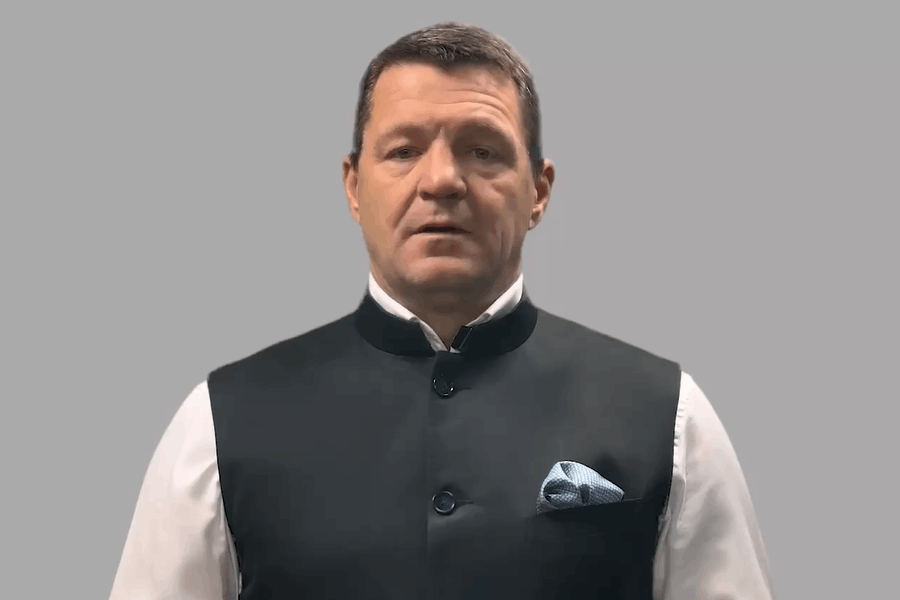
The narrow alley leads you to a two-storey building, spread over 2,000 sqft, the colour of rotting teeth, riddled with dark patches. A portion of the roof is missing, so the sunlight streams right in, expertly highlighting the damage, the garbage dump, ruins of what was once a no-nonsense Victorian structure. There are no residential habitats on the street, only shops and even those down their shutters before nightfall.
"Welcome to 1 Garstin Place. This building housed the first All India Radio studio in the entire country," says Anthony Khatchaturian, the tour guide. "The story goes that at night the old pianist who used to entertain the listeners of AIR emerges from the shadows to perform. One of my clients claims to have heard the melancholy notes during one of our night walks," he continues, a hint of amusement in his deadpan voice.
When Khatchaturian, a former Scotland Yard cop, returned to his home city, Calcutta, a year ago, he decided to start a heritage walk "dressed up" as a haunted tour. Passes to Walking with Ghosts, as the tour is titled, can be purchased online.
Flipping through his register, Deepayan Roy, Khatchaturian's partner-in-crime and walk co-founder, remarks, "Since we launched on Halloween Day (October 31) 2015, we have had around 1,000 visitors. Seventy per cent of them are women."
It's not just Calcutta. Across urban India, people seem to be taking a break from the virtual world and trying to re-connect with reality. And bridging the gap are different types of games.
"Real-life escape games started in Hungary a few years ago. These were based on very famous online escape games that originated in Japan. But turning this concept into an 'immersive' real-life experience happened only a few years ago," explains Sanwari Gupta, founder and CEO of Cntrl.Shift.Esc (CSE).
CSE runs four different themes in Delhi and Gurgaon: The Safehouse, in which the gamer has to retrace the steps of a missing-in-action James Bond; The Quarantine Zone, which is all about trying to find the cure to a deadly epidemic or succumb to death; The Taken Souls, in which the participant is a captive on the ship of the dead and has to play to free his/her soul before the pirates wake up; and Room 7, which is all about solving a murder mystery.
According to Gupta, a lot of families sign up for these games, but a chunk of the clientele comprises corporate houses, which seem to regard these games as great team-building exercises. People usually pay anything between Rs 250 and Rs 900 per head for such thrills.

Ramananand Shangunni, HR professional, came all the way from Bhubaneswar to participate in the Calcutta ghost walk. "Calcutta at night is itself a showpiece. It is a beautiful city and it was fun walking around the city knowing you are in safe hands. It was both exciting and nerve-wracking," he says.
The walk starts from New Market at 11.30pm and covers about 5km and six heritage buildings - New Market, Statesman House, Calcutta High Court, 1 Garstin Place, Writers' Buildings and the Black Hole. Khatchaturian, Roy and Shouvik Mukherjee, the man behind all the research, take turns to regale the walkers with stories. The police, who are notified about the route, keep checking on the group.
But the organisers do not vouch for any kind of safety from paranormal mischief-makers. Reads the disclaimer on the online ad, tongue firmly in cheek: In the event of a ghost being seen, the guide accepts no responsibility for anyone's safety, the guide will be the first to run away, very fast.
Similar walks are being organised in the hill town of Mussoorie, too. Heritage group Been There, Doon That (BTDT) recently launched a two-hour ghost walk to acquaint those interested in Mussoorie's long colonial past, and also its numerous ghosts.
"We have very few heritage buildings left and those too are disappearing fast. So far we had been fighting out these things in court, but now we have decided to take the movement to the streets. The ghost walk is a heritage walk, organised to sensitise the public about the architectural wealth of the place," says Lokesh Ohri, convenor for Intach in Uttarakhand and the founder of BTDT. The walk, organised every weekend, is free of cost.
What's behind the search for the eerie and the challenging? Film director and theatre man Ashok Viswanathan believes that people want to add excitement to their "placid" lives. "The postmodern era is devoid of the flamboyance of the modernist era. No grand narrative holds true anymore - so people are inclining towards funky and freaky things," he says.
Presley Fernandes has no time for psycho or socio-cultural analysis. For this Mumbai-based entrepreneur, real-life escape games have worked out to be a great business proposition. His company, No Escape, is a year old but is gathering eyeballs.
"I was in Singapore when I first experienced this game. I found the concept very interesting and decided to book the experience - The Escape Artist. My wife and I enjoyed every minute of it. Each clue solved gave a sense of accomplishment," he says.
The games conducted by No Escape are a takeoff on their Singaporean counterparts. "Players are locked in a room and have to figure their way out in an hour. To break out, one requires observation, logical thinking and teamwork," Fernandes says.
Sandeep Pagaria, director, The Escape Hunt Experience, Bangalore, has conceptualised a real life escape called the Temple Trap. "These are not real temples but we try to create the ambience. There are engravings on the wall and the clues are hidden in these. Music plays softly in the background to enhance the experience," he says. Pagaria's company started six months ago and is a franchise of the Malaysia-based Escape Hunt Experience.
Ganesh Shankar, who works for an FMCG company in Mumbai, has participated in quite a few of these games. "I have been to Clue Hunt designed and organised by Ketan Chhatpar. They simulate pirate attacks, kidnappings, prison breaks and so on. One time when I was playing a prison escape game, I was handcuffed and dressed like a prisoner. There were bullet holes in the wall and there were clues hidden inside them," recalls Shankar.
The adrenalin pumping experience - be it from real or imagined ghost sightings or dodging the onslaught of the dark and dangerous - is the reward for the participant. "Every clue solved has a cheer in the form of a hoot or a high five or a clap or clenched fist," Fernandes says.
Well aware of the high feel-good quotient, entrepreneurs are making hay. The Escape Hunt Experience has just opened its second India franchisee in Hyderabad. Travel start-up Seek Sherpa is about to launch more ghost walks in Calcutta. And Khatchaturian and co., apart from spicing up the ghost walk with props like horse drawn carriages (to move from one heritage site to another) and a night bus tour, are planning to organise murder walks next - a tour of some well-known murder sites.
Clearly, fear is the key.

